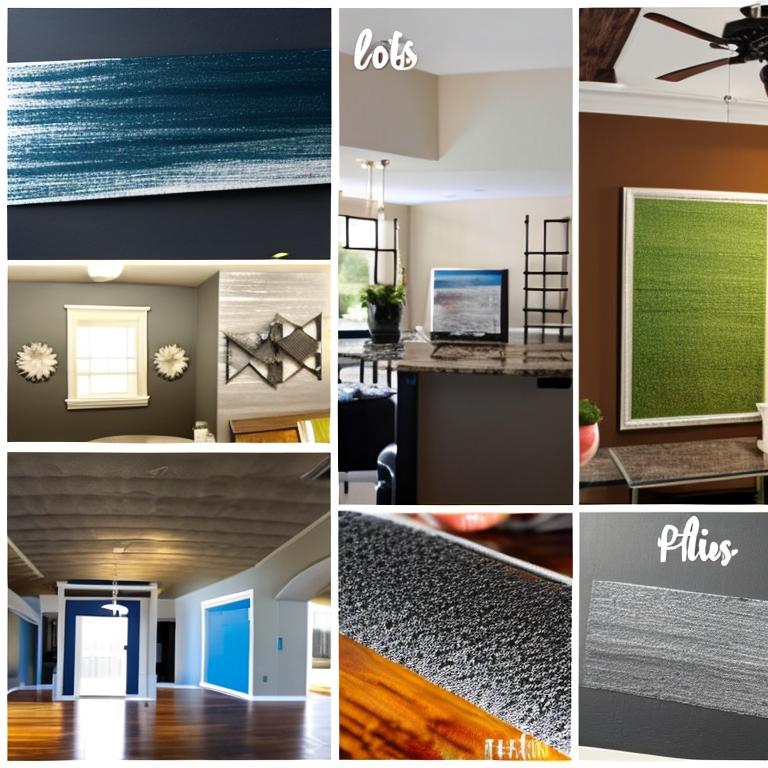Spray Painting Tips for Walls and Ceilings
When it comes to spray painting walls and ceilings, proper technique and preparation are key to achieving a flawless finish. Spray painting offers a quick and efficient way to cover large surfaces with paint, providing a smooth and even coat without brush marks or streaks. Whether you are painting a room in your home or tackling a larger project, following these spray painting tips will help you achieve professional results. Before starting the spray painting process, it is essential to prepare the area properly. Cover floors and furniture with drop cloths to protect them from overspray. Remove any fixtures or hardware that you don't want to be painted, and use painter's tape to mask off areas that need to remain unpainted, such as trim or windows. Proper preparation will ensure that the paint goes only where you want it to go. When selecting a spray paint for walls and ceilings, choose a high-quality paint that is specifically formulated for spray application. Consider the finish you want to achieve, whether it's matte, satin, or gloss, and select a paint that meets your desired aesthetic. Shake the paint can thoroughly before use to ensure a smooth and consistent application. When spraying paint onto walls and ceilings, maintain a consistent distance between the spray gun and the surface to achieve an even coat. Move the spray gun in a smooth and steady motion, overlapping each pass slightly to avoid streaks or uneven coverage. Start spraying off the surface and then move across in a horizontal or vertical motion, depending on the surface area you are painting. After applying the first coat of paint, allow it to dry completely before applying additional coats. Check for any drips or runs and sand them down lightly before proceeding with the next coat. Multiple thin coats of paint will provide better coverage and a more durable finish than one thick coat. Take your time and be patient to achieve the best results. By following these spray painting tips for walls and ceilings, you can transform your space with a fresh coat of paint that looks professional and polished. Experiment with different colors and finishes to create a unique and personalized look that enhances the overall aesthetic of your home or project. With practice and attention to detail, you can master the art of spray painting and achieve stunning results every time.
Repainting Furniture with a Textured Finish
Repainting furniture with a textured finish can breathe new life into old pieces and transform them into statement pieces in your home. Whether you want to update a worn-out dresser or add a pop of color to a plain table, repainting furniture with texture allows you to unleash your creativity and showcase your personal style. Follow these steps to achieve a beautifully textured finish on your furniture. The first step in repainting furniture with a textured finish is to prepare the piece for painting. Clean the furniture thoroughly to remove any dirt, grime, or old paint residue. Sand the surface lightly to create a smooth and even base for the new paint to adhere to. Fill in any cracks or imperfections with wood filler and allow it to dry before sanding again for a seamless finish. Once the furniture is prepped and ready, it's time to apply the textured paint. Choose a paint color and texture that complements the style of the piece and the overall aesthetic of the room. You can achieve texture using various techniques, such as stippling, sponging, or using textured paint additives. Experiment with different methods to create the desired texture and depth on the furniture. When applying the textured paint, work in small sections and apply thin, even coats to avoid drips or clumps. Allow each coat to dry completely before applying the next one. Depending on the level of texture you want to achieve, you may need to apply multiple coats to build up the desired effect. Take your time and pay attention to detail to ensure a professional-looking finish. After the textured paint has dried, you can further enhance the piece by distressing or antiquing it to add character and charm. Use sandpaper or a damp cloth to gently remove some of the paint and reveal the underlying layers for a weathered look. Finish the piece with a clear coat of sealant to protect the paint and enhance its durability for years to come. Repainting furniture with a textured finish is a creative and rewarding way to update your home decor and showcase your personal style. Whether you prefer a subtle texture for a modern look or a more pronounced texture for a vintage feel, experimenting with different techniques and finishes can help you achieve the perfect textured finish for your furniture pieces. Let your imagination run wild and transform your furniture into unique and eye-catching statement pieces that reflect your individuality and creativity.
